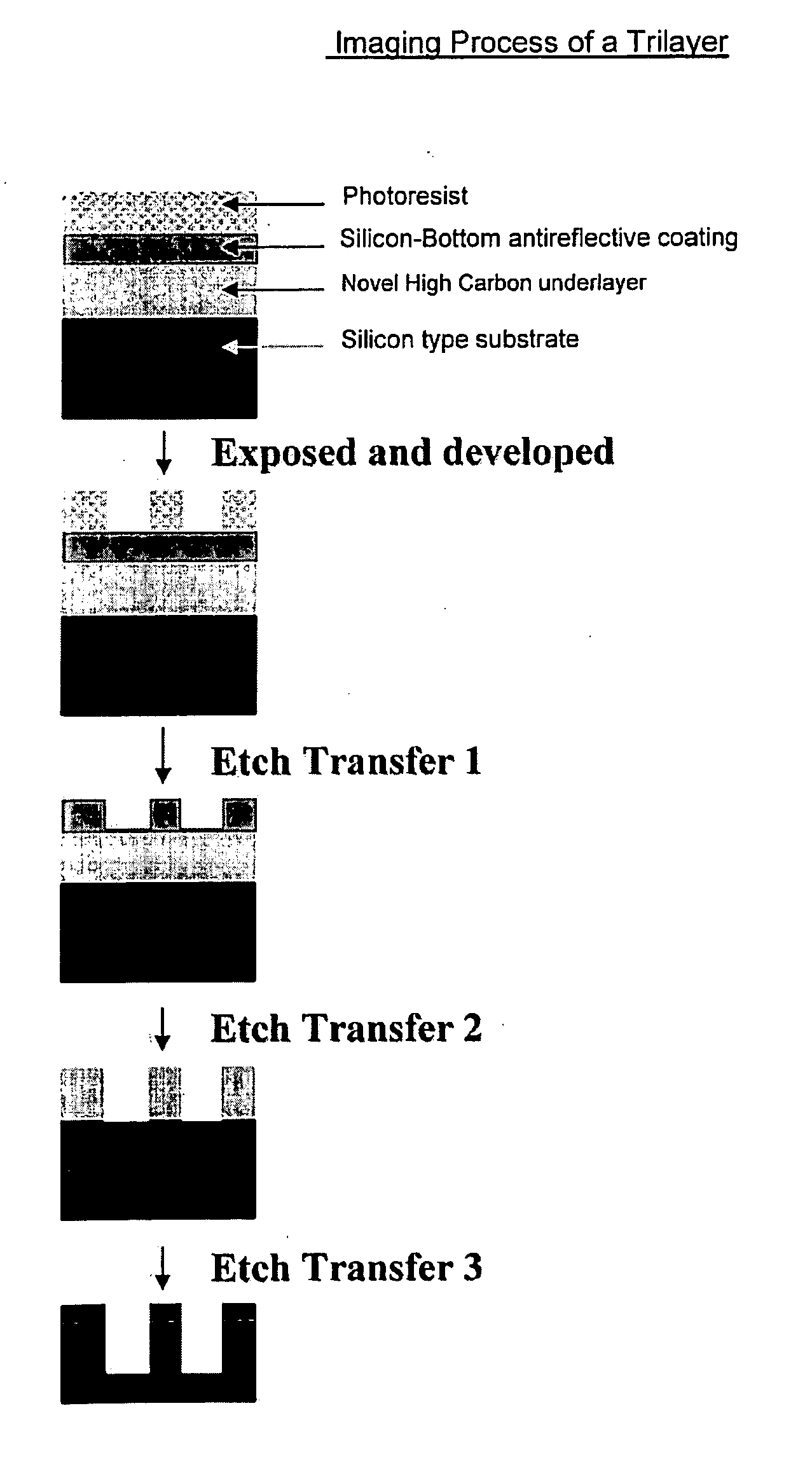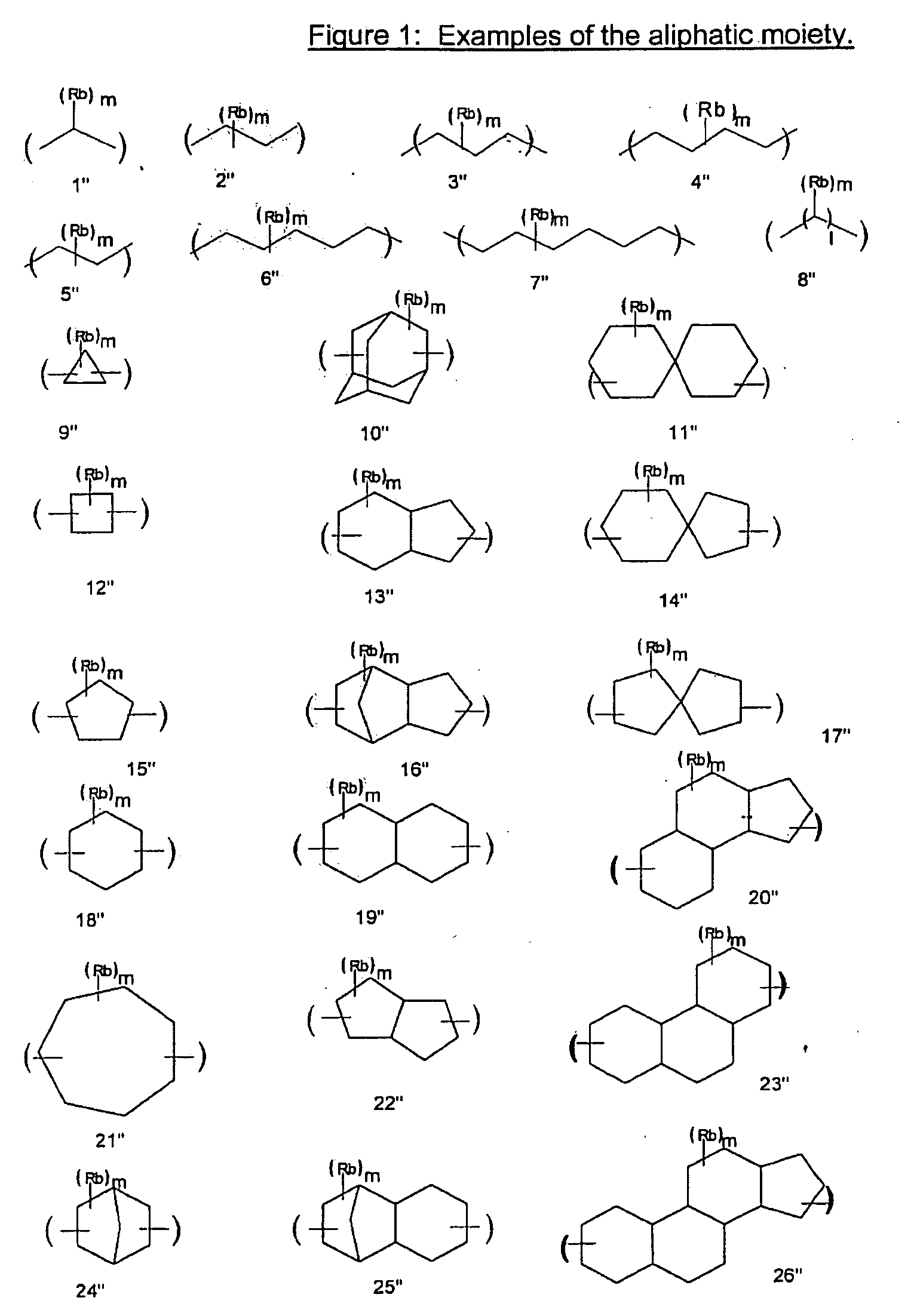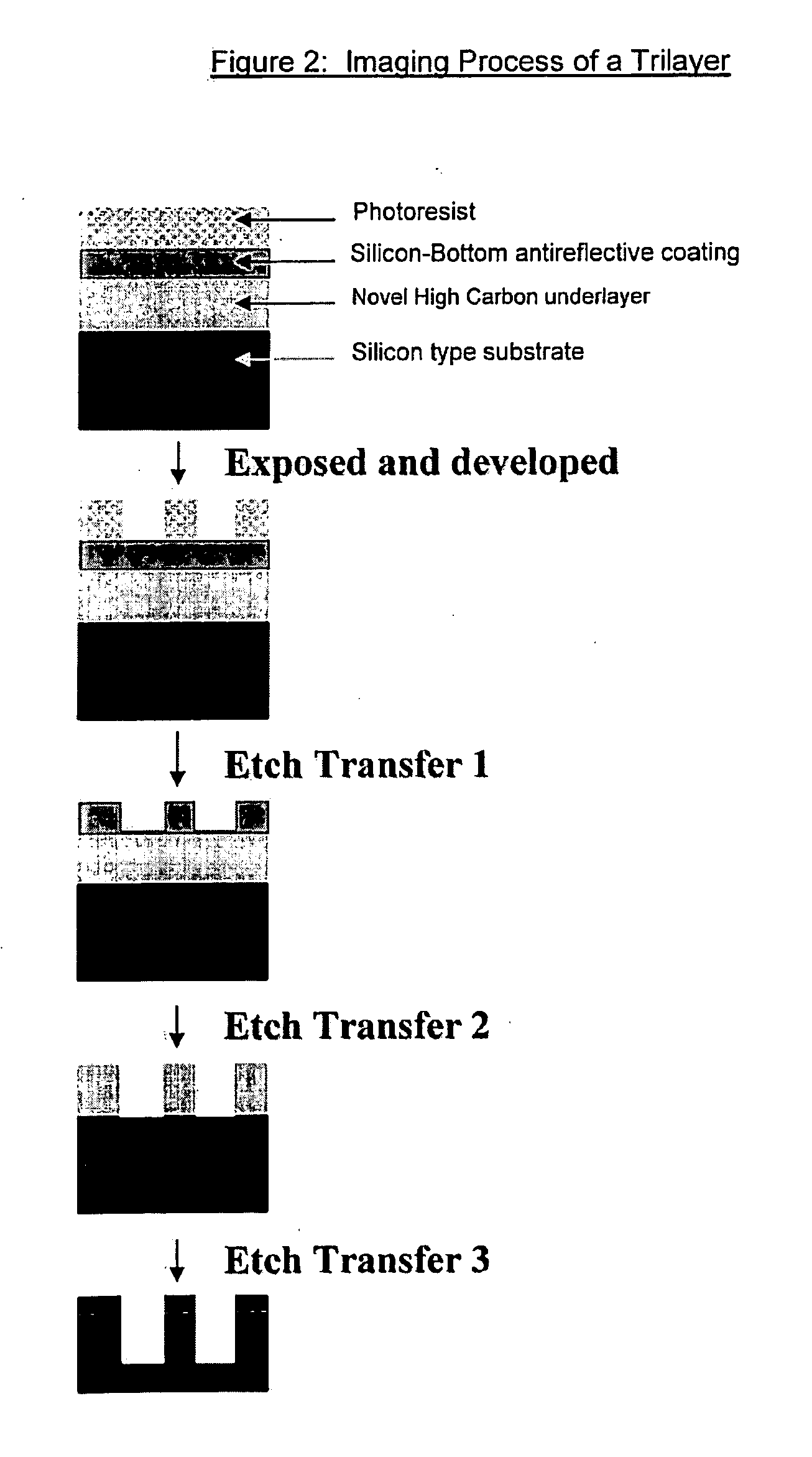Antireflective Coating Composition Comprising Fused Aromatic Rings
a technology of anti-reflective coating and aromatic rings, which is applied in the direction of electric/magnetic/electromagnetic heating, instruments, photomechanical equipment, etc., can solve the problems of back reflectivity, thin film interference effects and reflective notching, and change in critical line width dimensions
- Summary
- Abstract
- Description
- Claims
- Application Information
AI Technical Summary
Benefits of technology
Problems solved by technology
Method used
Image
Examples
example 1
[0045]Synthesis of Poly(Anthracenemethyl-co-Anthracene-co-1-Naphthol-co-Phenol-co-Adlamantane).
[0046]The monomers, anthracene 13.4 g (0.075 mole), 1-naphthol 10.8 g (0.075 mole), 1,3-adamantane diol 25.2 g (0.15 mole), phenol 14.1 g (0.15 mole), 134.18 g diglyme (diethylene glycol dimethyl ether), and 100.16 g of CPME (cyclopentyl methyl ether) were weighed together in a 1000 mL, 4 neck, round bottomed flask (RBF) equipped with overhead mechanical stirring, condenser, thermo watch, dean stark trap, and N2 purge. The components were mixed together at room temp for 10 minutes and 2.5 g of triflic acid was added. It was mixed at room temp for 5 minutes, and then the temperature was set to 140° C. As the temperature increased, the water was removed from the reaction using the Dean Stark trap. The reaction took one hour to finish and to reach the set temperature. After one hour, 3.90 g (0.075 mole) of 9-anthracene methanol was added to the prepolymer mixture. The reaction was continued a...
example 2
[0047]1.5 g of polymer from Example 1 was taken in a bottle, 0.15 g of TMOM-BP was added, 0.6 g of DBSA (dodecyl benzene sulphonic acid) at 10 % solution in ArF-Thinner (70PGME / 30PGMEA) was added and 12.75 g of ArF Thinner was added to make 15.00 g of solution. After shaking over night the formulation was filtered by 0.2 μm filter.
example 3
[0048]n and k Measurement: The formulation from Example 2 was adjusted to 1.25% solid with ArF Thinner and the mixture was allowed to mix until all the materials become soluble. The homogeneous solution was filtered with 0.2 μm membrane filter. This filtered solution was spin-coated on a 4″ silicon wafer at 1500 rpm. The coated wafer was baked on hotplate at 230° C. for 60 seconds. Then, n and k values were measured with a VASE Ellipsometer manufactured by J. A. Woollam Co. Inc. The optical constants n and k of the film for 193 nm radiation were, n=1.44, k=0.48.
PUM
| Property | Measurement | Unit |
|---|---|---|
| temperature | aaaaa | aaaaa |
| refractive index | aaaaa | aaaaa |
| refractive index | aaaaa | aaaaa |
Abstract
Description
Claims
Application Information
 Login to View More
Login to View More - R&D
- Intellectual Property
- Life Sciences
- Materials
- Tech Scout
- Unparalleled Data Quality
- Higher Quality Content
- 60% Fewer Hallucinations
Browse by: Latest US Patents, China's latest patents, Technical Efficacy Thesaurus, Application Domain, Technology Topic, Popular Technical Reports.
© 2025 PatSnap. All rights reserved.Legal|Privacy policy|Modern Slavery Act Transparency Statement|Sitemap|About US| Contact US: help@patsnap.com



